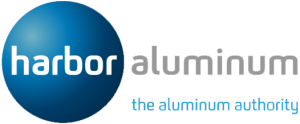The same idea applies to aluminum for airplanes. By using aluminum alloys, you can create a lighter aircraft. Commercial airplane manufacturers use lightweight aluminum to help reduce jet fuel expenses. Today, up to 80 percent of commercial planes are made of aluminum. Some of the most common aluminum alloys, along with their respective properties, are as follows.
2024-T3
The 2024-T3 aluminum sheet has excellent fatigue resistance and is considered the most common of the high-strength aluminum alloys. 2024-T3 Alclad aluminum sheet is typically used for repair and restoration, aircraft structures, cowls, fuselage and wing skins.
7075
Aircraft manufacturers often use this high-strength alloy to fortify aircraft structures. Aluminum alloy 7075 has zinc, magnesium and copper for added strength, and it anodizes well. Although difficult to weld, this alloy will result in a top-quality finish and is known to have the best machinability of the alloys.
3003-H14
This alloy contains pure aluminum with manganese added for strength. It’s one of the most widely used aluminum alloys. 3003-H14 may be brazed, welded, spun, or deep-drawn and has great workability. This alloy is non-heat treatable and is widely used for baffle plating and cowls.
5052-H32
This alloy is not structural and has the highest strength in the series of non-heatable alloys. 5052 aluminum sheet has excellent workability and corrosion resistance, particularly in marine applications. This aluminum sheet is most often used to construct fuel tanks.
6061-T6
This alloy has excellent finishing ability and corrosion resistance. The 6061-T6 aluminum sheet can be fabricated using standard techniques with a strength level comparable to mild steel. Typical uses include structural components, truck frames and bodies and aircraft landing mats.

